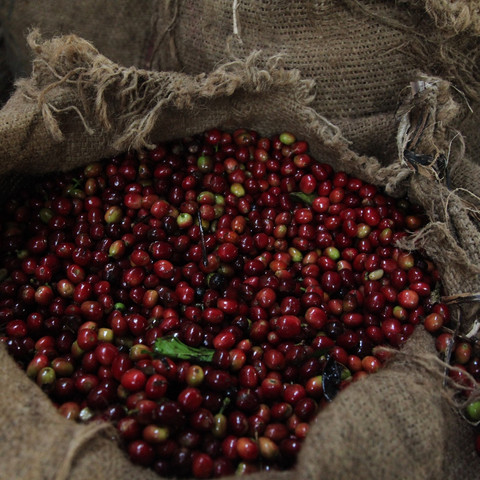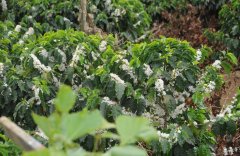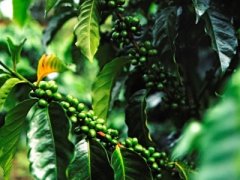Introduction to the flavor of Sidamo Red Cherry Project Coffee in the Sidamo G1 Valley

Professional coffee knowledge exchange more coffee bean information please follow the coffee workshop (Wechat official account cafe_style)
Description of Coffee Flavor in Ethiopia Sunshine Sidamo G1 Valley Shakisuogesha processing Plant
Product name: red Cherry Project Ethiopia Solar Sidamo G1 Valley Gee Shakiso Dunbiu Village Murixu processing Plant
(Ethiopia Sidamo Guji Shakiso Danbi Uddo Mulish Natural G1) baking degree: (shallow # 2)
Flavor description: yellow kumquat, sweet peach, citrus, fine acid,
Pineapple, wheat-scented black tea, brown sugar, smooth taste, good aftertaste.
Country: Ethiopia (Ethiopia)
Producing area: Oromia Region
Guji Zone area
Shakisso Woreda town
Dunbi Udo (Danbi Uddo Kebele) Village
Treatment plant: Murixu treatment plant (Mulish)
Altitude: 1900 to 2100 m
Variety: Ethiopian ancient superior original species (Heirloom)
Annual rainfall: about 1500 to 2000 mm (mm)
Treatment method: African scaffolding sun drying treatment
.

Introduction:
The sudden rise of the producing area of Guji Zone has become a hot topic of discussion.
It is indeed a special producing area worthy of considerable attention. The development of coffee in Ethiopia in recent years
It also confirms that the rise of Guji producing areas is indeed one of the important indicators for the development of Ethiopia in recent years.
In addition to the larger regions to which Guji belongs, such as Hambela and Shaquiso.
(Shakisso) and other places, there are also excellent raw beans from private processing plants or even single estates.
Because of the particularity of the producing area, it can not be compared with the traditional famous Yejiaxuefei producing area. What's more
In terms of innovative treatments, there have also been honey-treated batches of Ethiopian coffee in addition to Rosa Village.
(Gesha Village) in addition to becoming an eye-catching focus recently, people from Guji producing areas have also become
An important hot spot. To understand the trends in Ethiopia, Guji can be said to be non-negligible.
Highlight.
.
The administrative region of Ethiopia is divided into four grades, the order from large to small is Region, Zone,
Woreda, kebele, most raw coffee beans are named according to this rule.
The Guji-Shaquiso launched this time is located in the southeast of Yejia Xuefei, a well-known producing area, and is divided into administrative regions.
Belongs to Oromia Region → Guji Zone → Shakisso woreda and belongs to regional type
Source of coffee, raw beans. The Murixu treatment plant (Mulish) is located in Shakisso.
Danbi Uddo Kebele village, is a private water treatment plant, combined with the local
Red fruits are harvested by 850 small coffee farmers through the Dutch Red Cherry Project OCR (Operation Cherry Red)
It has become the best choice for this batch of excellent high quality.
.
The Red Cherry Project OCR (Operation Cherry Red) is an EU program developed by the Netherlands.
The government proposes that the main purpose is to encourage coffee farmers in Ethiopia to produce better quality coffee beans.
Origin: led by Dutch Trabocca BV (the largest soybean vendor in the Netherlands), partially sponsored by the Dutch government
Provide financial loans to support new hardware equipment and production processing knowledge to assist farmers.
Harvest method: red coffee and cherries are picked by hand in harvest season, 100% of which are strictly selected by women.
Fully ripe red cherry coffee, attentive eyes and hard-working women are the OCR program.
An important driving force behind the scenes. Because of its strict selection, the annual production is only about 1500 in small batches.
To three thousand kilograms of coffee beans. The ripe coffee fruit looks like a cherry, so it has "coffee cherry".
It's called. OCR began to be implemented in 2005. At present, the main producing areas are Yega Xuefei, Sidamo,
Penga Forest, Lekanti, Ken Bata, Irubabo, Hara, Lim, joined Coroga in 2011
(Golocha) origin (near Hara), etc., these are unique in flavor and can be fully displayed.
The flavor of Ethiopian beans, Trabocca will choose from the coffee after receiving the coffee, through
High bonuses will be paid to farms whose cup quality tests are up to standard in Ethiopia and the Netherlands.
The cup test pass score must be above 88 in order to become a good coffee for the red cherry program, by Trabocca
The company exports directly to buyers all over the world.
.
Just as Yega Xuefei became well known after she became famous, Guji became an independent producing area. Gu Ji
With its superior geographical location and cup flavor, it was independent into an independent production area by ECX in 2010.
Shakisso (sometimes translated as Shakiso) attracts the most attention in the Guji producing area.
The micro-producing area is geographically located just southeast of Yegashafi, with an average altitude of
More than 1800 meters, fertile black soil (Vertisol), significant temperature difference between day and night
So that the local has the local conditions to produce high-quality boutique coffee. Local coffee production
Almost all of the sources belong to the individual form of small farmers, picking the perfect maturity of their own neighbors at the arrival of the production season.
The red berries are sent to the treatment plant and placed on a well-ventilated African scaffolding to control the temperature and
The degree of fermentation, after removing the pulp, the water content was reduced to between 11.5% and 12%, and then processed after processing.
After the completion of the rest operation, export is done through the competitive bidding system of the ECX Ethiopia Commodity Exchange.
Local exporters or international buyers follow this system to find their favorite raw coffee beans.
Important Notice :
前街咖啡 FrontStreet Coffee has moved to new addredd:
FrontStreet Coffee Address: 315,Donghua East Road,GuangZhou
Tel:020 38364473
- Prev

Introduction to the characteristics of coffee in Neri coffee producing area which is the most famous coffee producing area in Kenya
Professional baristas please follow the coffee workshop (Wechat official account cafe_style) Central Kenya Coffee (Nyeri) is located in the east of the Abadale Mountains Mountains and the west of Mount Mount Kenya in Kenya, is a key producer of premium boutique coffee in Kenya in recent years. The Mushika Cooperative (Mutheka) began to grow coffee and bags in the 1950s.
- Next

Kenya Coffee Select Micro Batch Kenya Coffee RTC Contest Best Quality Coffee Beans
Professional barista exchanges, please pay attention to coffee workshop (Weixin Official Accounts cafe_style) Gikanda cooperative for round table competition (RTC competition) Chang Shengjun, produced high-quality coffee beans, won quite a lot of affirmation. It consists of three micro-processing plants: Gichathaini, Kangocho and Ndaroin. Dorman, from the vast Kenney
Related
- Detailed explanation of Jadeite planting Land in Panamanian Jadeite Manor introduction to the grading system of Jadeite competitive bidding, Red bid, Green bid and Rose Summer
- Story of Coffee planting in Brenka region of Costa Rica Stonehenge Manor anaerobic heavy honey treatment of flavor mouth
- What's on the barrel of Blue Mountain Coffee beans?
- Can American coffee also pull flowers? How to use hot American style to pull out a good-looking pattern?
- Can you make a cold extract with coffee beans? What is the right proportion for cold-extracted coffee formula?
- Indonesian PWN Gold Mandrine Coffee Origin Features Flavor How to Chong? Mandolin coffee is American.
- A brief introduction to the flavor characteristics of Brazilian yellow bourbon coffee beans
- What is the effect of different water quality on the flavor of cold-extracted coffee? What kind of water is best for brewing coffee?
- Why do you think of Rose Summer whenever you mention Panamanian coffee?
- Introduction to the characteristics of authentic blue mountain coffee bean producing areas? What is the CIB Coffee Authority in Jamaica?

